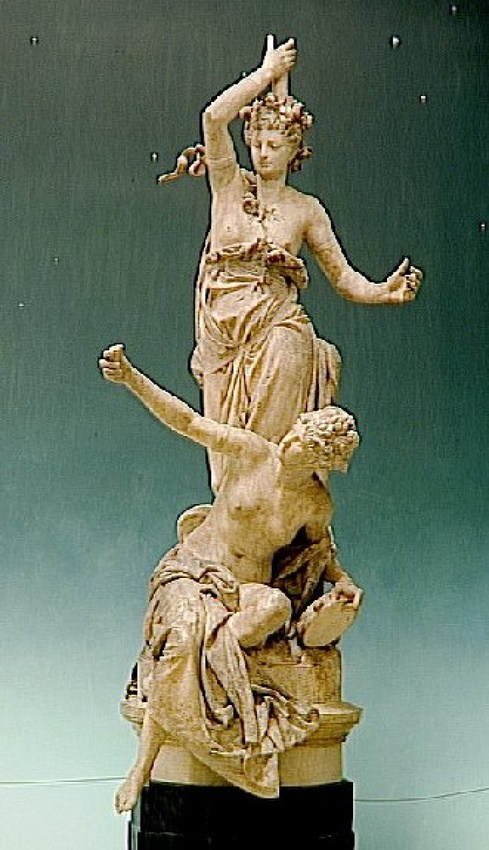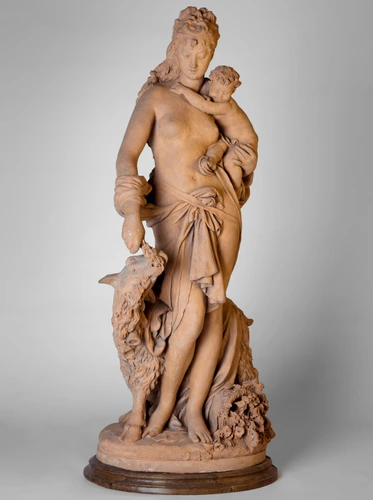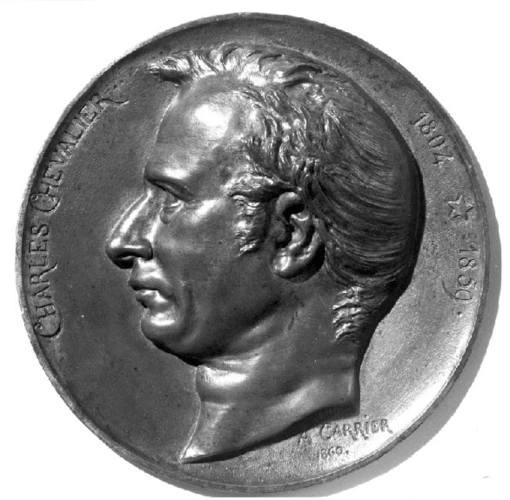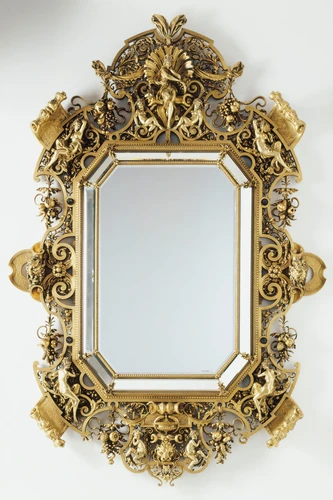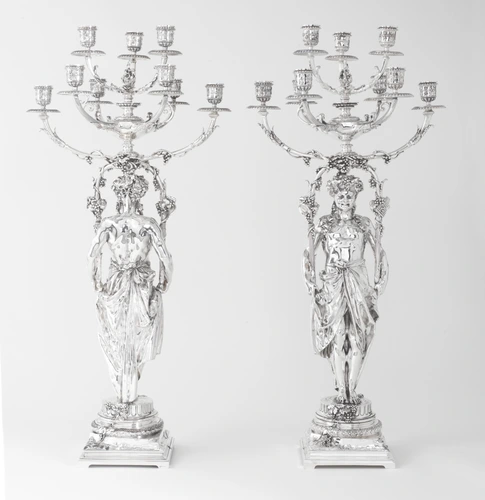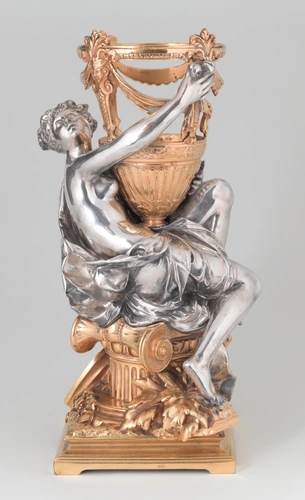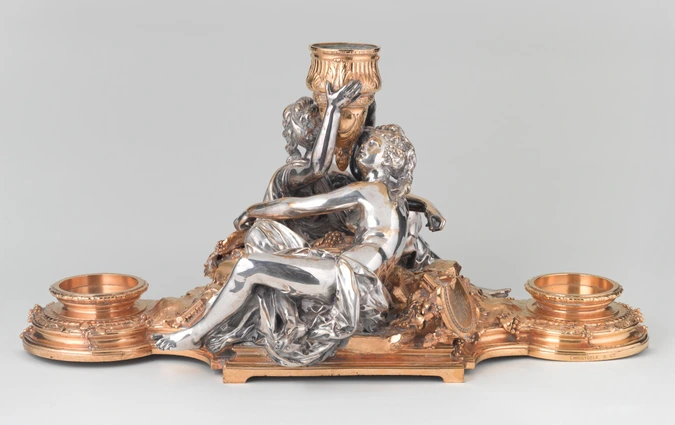Torchère au tambourin
In the 19th century, there were few sculptors who, like Carrier-Belluse, devoted a significant part of their careers to what was then known as "decorative sculpture". Carrier directed pottery factories in England and at Sèvres in France. He gave work to young Rodin and helped decorate many important buildings. Garnier asked him to design candelabra for the new Opera House, the plaster models for which are shown here. They were made by the goldsmith Christofle in 1873, by an electro-chemical technique called galvanoplasty in which the mould is dusted with metal. The two bronze candelabra are still in place in the Garnier Opera House, flanking the main staircase.
Without losing sight of the monumental character required of the decorative groups in the spacious main hall of the building, the artist enlivened the vertical structure by combining the bodies of two women, with a facility which is not surprising from a "sculpting machine" as the critics called him. His candelabra are one of the main elements in the decoration of the main staircase. The tiered arrangement of the figures, the distribution of the lamps they were once holding, the twist of the bodies and the faces looking in so many directions at once are all inventions which gave new impetus to the issue of lighting and turned these whirling groups into a pivot of the building's design.
